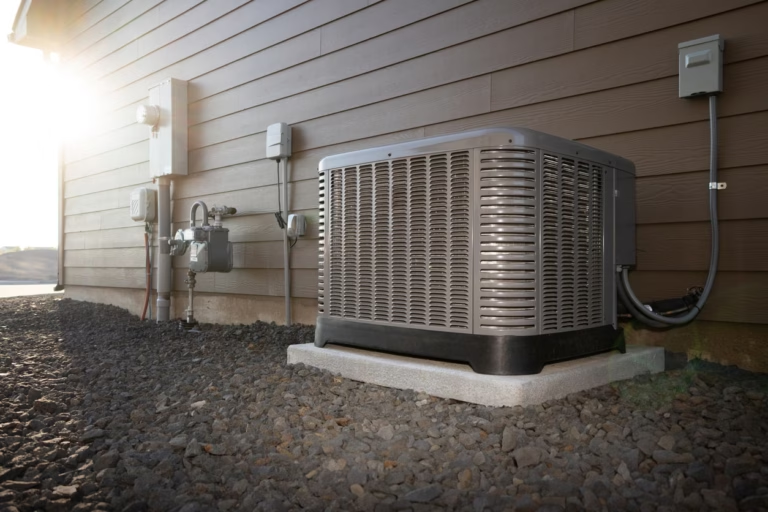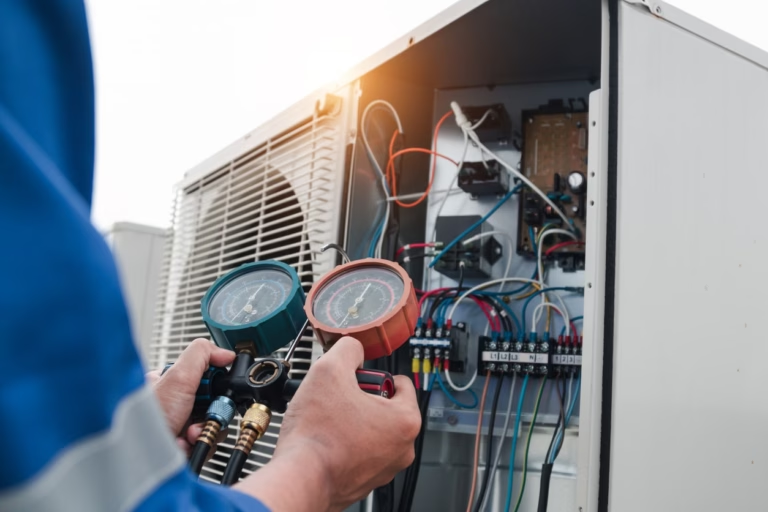In 2025, homeowners will face a major change in the HVAC industry due to new EPA regulations. The EPA’s 2025 refrigerant mandate aims to cut high-GWP refrigerants, like R-410A, to fight climate change. Understanding the changes, their impact on your HVAC system, and how to prepare is essential for making informed decisions about your home’s heating and cooling needs.

What is the 2025 EPA Refrigerant Rule?
The rule phases out high-GWP refrigerants to encourage using newer, eco-friendly alternatives. R-410A is a popular refrigerant because it’s effective in cooling systems. However, its high GWP means it contributes significantly to global warming when released into the atmosphere. As part of the HVAC refrigerant regulations, R-410A will gradually be phased out. The goal is to reduce greenhouse gas emissions and align with global efforts to combat climate change. By 2036, the EPA plans to decrease the production and consumption of high-GWP refrigerants by 70%.
What Are the New Refrigerants?
To replace R-410A, manufacturers will shift to refrigerants like R-454B and R-32. These alternatives have lower GWP ratings and are more eco-friendly. They reduce climate change and enable more energy-efficient HVAC systems.
- R-454B: This refrigerant is a newer option with a GWP of 466, significantly lower than R-410A. It offers improved energy efficiency and is already being adopted in various HVAC systems.
- R-32: Another popular alternative, R-32, has a GWP of 675 and is used in residential and commercial systems. It is more energy-efficient and has a smaller environmental impact compared to R-410A.
How Does This Impact Homeowners?
The EPA’s 2025 refrigerant mandate brings both challenges and opportunities for homeowners. Understanding how these changes may affect your HVAC system can help you prepare and make smarter decisions. Here are some potential impacts homeowners should consider:
- Cost Implications: As R-410A’s availability decreases, the phase-out of this refrigerant will likely increase the costs of maintaining systems that use it. This may include higher prices for refrigerant refills and repairs.
- HVAC System Upgrades: Homeowners with older HVAC systems may need to consider upgrading to newer systems compatible with environmentally friendly refrigerants like R-454B or R-32.
- Energy Efficiency Benefits: Newer refrigerants are designed to work with more energy-efficient systems, potentially reducing monthly energy bills over time.
- Limited Availability of R-410A: As R-410A production is reduced, it may become harder to find and more expensive to purchase for repairs or maintenance. This could lead to delays in servicing older systems.
- Home Resale Value: Homes with outdated HVAC systems may decline resale value as buyers increasingly seek properties with modern, eco-friendly heating and cooling systems.

Preparing for the Transition
Homeowners can take proactive steps to ensure a smooth transition to the new refrigerant standards. Here are some tips to help you prepare:
- Schedule a System Assessment: Have a professional heating, ventilation, and air conditioning technician evaluate your current system to determine its efficiency, condition, and compatibility with new refrigerants.
- Plan for Future Upgrades: Research energy-efficient HVAC systems that use environmentally friendly refrigerants like R-454B or R-32. Budgeting for a replacement now can help you avoid higher costs later.
- Check for Incentives: Explore government or utility company incentives for upgrading to energy-efficient systems, which can help offset initial investment costs.
- Educate Yourself on New Refrigerants: Learn about the characteristics, benefits, and maintenance needs of refrigerants like R-454B and R-32 to understand how they differ from older options.
- Build a Relationship with an HVAC Contractor: Find a reliable, certified HVAC contractor who is familiar with the new refrigerant regulations. This ensures you have a trusted resource for guidance, installation, and maintenance.
Long-Term Benefits of the Refrigerant Mandate
The EPA’s 2025 refrigerant mandate offers long-term benefits for homeowners and the environment. Homeowners can help fight climate change by using refrigerants like R-454B and R-32, which have a lower global warming potential. These refrigerants work with energy-efficient HVAC systems. They help lower energy bills and reduce repair needs. Upgrading to modern systems can also boost home resale value, making it a smart long-term investment.

Contact Us
The EPA’s refrigerant changes are approaching, and being proactive is the best way to navigate this transition smoothly. Preparing now with the help of trusted HVAC professionals can ensure your system stays compliant, efficient, and cost-effective. While the changes may seem challenging, they also provide an opportunity to improve your home’s heating and cooling performance.
If you have questions or are ready to make the switch, reach out to Progressive Air. Our experienced team is here to assist with inspections, upgrades, and maintenance, keeping you ahead of the curve and your home comfortable and energy efficient.

